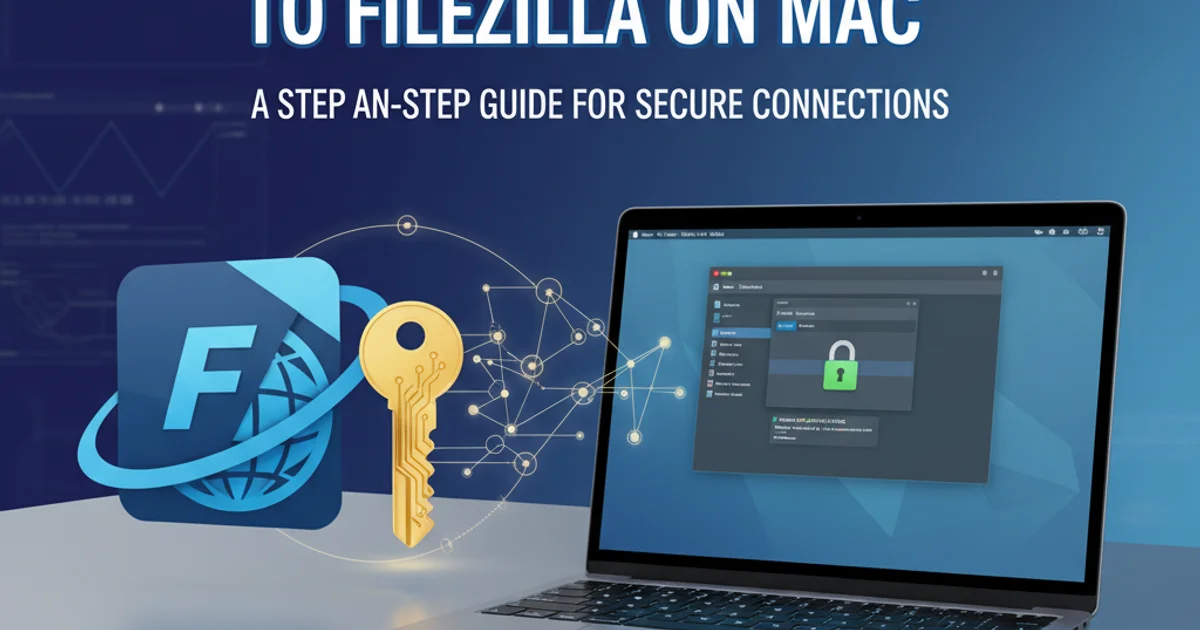Trying to Add SFTP Keyfile to FileZilla on Mac
Categories:
Adding SFTP Keyfiles to FileZilla on macOS: A Comprehensive Guide

Learn how to correctly configure FileZilla on macOS to use SFTP keyfiles for secure, passwordless authentication to your servers.
Connecting to an SFTP server using a keyfile (SSH private key) offers a more secure and convenient alternative to password-based authentication. This guide will walk you through the process of adding and using an SFTP keyfile with FileZilla on macOS, addressing common pitfalls and ensuring a smooth connection.
Understanding SFTP Keyfiles and FileZilla's Requirements
SFTP (SSH File Transfer Protocol) leverages SSH keys for authentication. An SSH key pair consists of a public key (stored on the server) and a private key (kept securely on your local machine). When you connect, your client (FileZilla) presents your private key, and the server verifies it against the public key. FileZilla, like many SSH clients, typically expects private keys to be in a specific format, often PPK (PuTTY Private Key) or OpenSSH format. On macOS, keys are usually generated in OpenSSH format, which FileZilla can generally handle directly, but sometimes conversion might be necessary, especially for older keys or specific server configurations.
flowchart TD
A[Generate SSH Key Pair (if needed)] --> B{Private Key Format?}
B -- OpenSSH --> C[Add Key to FileZilla Site Manager]
B -- PPK/Other --> D[Convert Key to OpenSSH/PPK]
D --> C
C --> E[Configure Site Manager Entry]
E --> F[Connect to SFTP Server]
F -- Success --> G[Secure File Transfer]
F -- Failure --> H[Troubleshoot Connection]SFTP Keyfile Configuration Workflow for FileZilla
Preparing Your Keyfile for FileZilla
Before adding your key to FileZilla, ensure your private key is accessible and has the correct permissions. Private keys should ideally be stored in your ~/.ssh/ directory and have restrictive permissions (e.g., chmod 400 or chmod 600). If your key is passphrase-protected, FileZilla will prompt you for the passphrase during the connection attempt.
ssh-keygen on macOS, it's likely already in a compatible OpenSSH format. You typically won't need to convert it unless you encounter specific errors or are dealing with keys from other systems.chmod 400 ~/.ssh/your_private_key
Setting correct permissions for your private key file.
Adding the Keyfile to FileZilla's Site Manager
FileZilla manages server connections and their associated authentication methods through its Site Manager. This is where you'll specify your keyfile for a particular SFTP connection.
1. Open Site Manager
Launch FileZilla and go to File > Site Manager... (or press Cmd+S).
2. Create a New Site
Click New Site and give your connection a descriptive name.
3. Configure Connection Details
In the General tab:
- Set
ProtocoltoSFTP - SSH File Transfer Protocol. - Enter your server's
Hostaddress (e.g.,sftp.example.com). - Set
Logon TypetoKey file. - Enter your
Username for the SFTP server.
4. Select Your Keyfile
Click the Browse... button next to the Key file field. Navigate to your private key file (e.g., ~/.ssh/id_rsa or ~/.ssh/your_private_key) and select it. FileZilla will automatically attempt to load it.
5. Connect
Click Connect. If your key is passphrase-protected, FileZilla will prompt you to enter the passphrase. If successful, you should connect to your SFTP server.
.ppk file alongside your original key. You should then select this new .ppk file in the Site Manager.